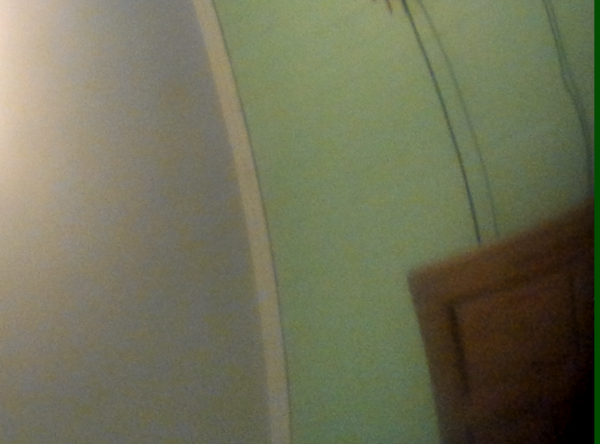NVIDIA Jetson VI Stride Alignment

|
|
Overview
The following document gathers together notes about a capture subsystem limitation presented on Jetson platforms and how to deal with it by enabling the stride alignment feature.
VI image size limitation
The capture subsystems found on Jetson platforms (Video Input Unit) have a limitation on data acquisition where the bytes per line on the image should be a number divisible by 64.
Bytes per line divisible by 64
VI can capture images where the bytes per line are divisible by 64. Here is an example:
- 1920x1080 RAW12
bytes: 2 bytes per line: 1920 * 2 = 3840 # Divisible by 64 3840 / 64 = 60 # Total size of the image 1920 * 1080 * 2 = 4147200
Bytes per line Not divisible by 64
For images where the bytes per line are not divisible by 64, the image captured by VI could look kind of corrupted. Here is an example:
- 4208x3120 RAW10
bytes: 2 bytes per line: 4208 * 2 = 8416 # Not Divisible by 64 8416 / 64 = 131,5 # Total size of the image 4208 * 3120 * 2 = 26257920

Fortunately, there's something we can do to fix this problem and get the correct image. Check below section
VI Stride alignment
As you can infer, it seems that the VI unit needs to handle the data with packets of 64 bytes, but when the number of bytes per line is not a multiple of the packet size value, the image obtained is corrupted. This problem can be fixed if a stride of empty pixels is added to the image to complete the 64-byte alignment on the frame lines.
Enable Stride alignment
Depending on the Kernel version and platform, the VI driver stride alignment could not be enabled. In general, to enable it, we need to do the following change in the L4T-Kernel files:
+++ b/kernel/nvidia/include/media/tegra_camera_core.h @@ -23,7 +23,7 @@ /* Width alignment */ #define TEGRA_WIDTH_ALIGNMENT 1 /* Stride alignment */ -#define TEGRA_STRIDE_ALIGNMENT 1 +#define TEGRA_STRIDE_ALIGNMENT 64 /* Height alignment */ #define TEGRA_HEIGHT_ALIGNMENT 1 /* Size alignment */
In the above case we are defining a stride alignment of 64. Check the following example to understand how it works:
- 4208x3120 RAW10
bytes: 2 bytes per line: 4208 * 2 = 8416 # Not Divisible by 64 8416 / 64 = 131,5 # Stride is added to increase the bytes per line fixed bytes per line: 132 * 64 = 8448 fixed width: 8448 / 2 = 4224 # Total size of the image 4224 * 3120 * 2 = 26357760
At the end we will get a bigger image that contains the empty pixels at the right, but the image will not be corrupted.

The stride can be increased on multiples of 2 (64, 256, 512, etc.). NVIDIA emphasizes that the worst case would be using 256. Be aware that using 256 can increase the stride depending on the bytes per line value:
- 1296x1600 RAW10
bytes: 2 bytes per line: 1296 * 2 = 2592 # 64 stride alignment 2592 / 64 = 40,5 fixed bytes per line: 41 * 64 = 2624 fixed width: 2624 / 2 = 1312 image size: 1312 * 1600 * 2 = 4198400 # 64 stride alignment 2592 / 256 = 10,125 fixed bytes per line: 11 * 256 = 2816 fixed width: 2816 / 2 = 1408 image size: 1408 * 1600 * 2 = 4505600
Changes on Stride Alignment
VI2 - TX1/Nano (No tested)
- Checking the files, it seems that the stride alignment is selected by
TEGRA_SURFACE_ALIGNMENTon kernel/nvidia/include/media/vi2_registers.h (default 64).
VI4 - TX2
- For JP-4.2 and older versions, the stride alignment is selected by
TEGRA_STRIDE_ALIGNMENTon kernel/nvidia/include/media/tegra_camera_core.h (default 1). - For higher versions than JP-4.2, the stride alignment is selected by
RM_SURFACE_ALIGNMENTon kernel/nvidia/drivers/media/platform/tegra/camera/vi/vi4_fops.c (default 256). - Also for higher versions than JP-4.2, bytes per line can be selected as a user level, for example:
v4l2-ctl -d /dev/video0 --set-fmt-video=width=1296,height=1600,pixelformat=RG10,bytesperline=3072
VI5 - Xavier
- The stride alignment is selected by
TEGRA_STRIDE_ALIGNMENTon kernel/nvidia/include/media/tegra_camera_core.h.
V4l2 control "preferred_stride"
For recent JP versions, now there's a v4l2 control that allows you to select the desired stride alignment. Here is how to apply the preferred_stride control to the previous example:
v4l2-ctl -d /dev/video0 --set-fmt-video=width=1296,height=1600,pixelformat=RG10 preferred_stride=3072
For direct inquiries, please refer to the contact information available on our Contact page. Alternatively, you may complete and submit the form provided at the same link. We will respond to your request at our earliest opportunity.
Links to RidgeRun Resources and RidgeRun Artificial Intelligence Solutions can be found in the footer below.

